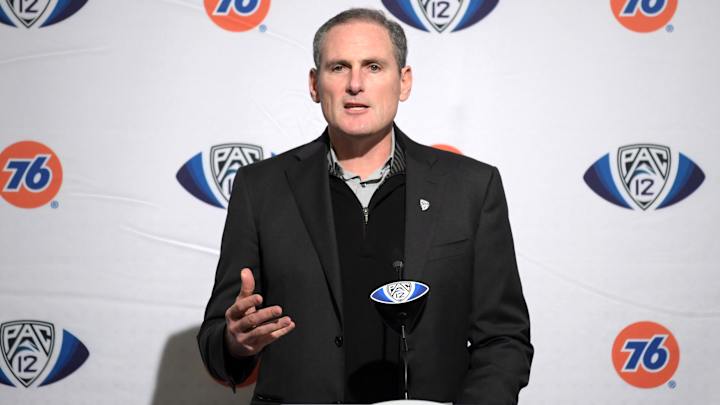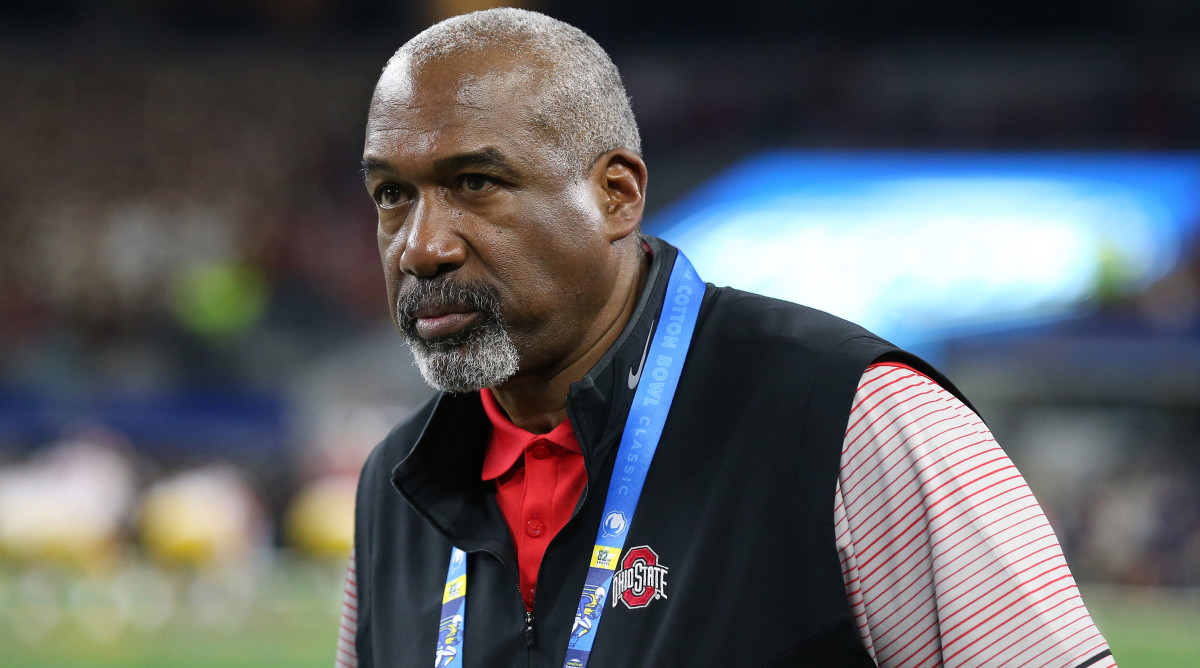Why Larry Scott's Early Departure Was Inevitable and Who the Pac-12 Should Hire Next


The sea change continues at the top of college athletics, with Larry Scott joining Jim Delany and John Swofford as Power 5 commissioners leaving their jobs within the last year or so. But while Delany and Swofford departed to hosannas from their constituents in the Big Ten and Atlantic Coast Conference, respectively, Scott’s departure is with a shove in the back from the Pac-12.
These gigs are sweet enough that people tend to keep them as long as they can. Delany stepped down at age 71. Swofford is in his final months on the job at 72. Bob Bowlsby leads the Big 12 at 69. Scott is out at the relatively young age of 56, because the esteemed “Conference of Champions” became the conference of problems on his watch.
To be fair, there already were problems before Scott arrived that stemmed from an ossified league leadership. The Pac-12 had existed for too long as a mom-and-pop shop in a time when college athletics was exploding into big business. But after flashing some promise early in his tenure, Scott became more of a liability than an asset and quickly turned officials at many member schools against him.
Before long he was known more for spending money on himself and the league office than making money for the schools; for the worst media-rights deal in the Power 5; for officiating debacles; and for an increasing competitive gap between the Pac-12 and the rest of the big boys.
Thus Larry Scott’s legacy is not one suited for a noble ride into the sunset. Nor does his successor step into the easiest of jobs.
The Pac-12 is a great conference in many ways: academically strong; phenomenal cities; largely desirable weather; a commitment to athletic leadership diversity; Olympic sports excellence; and a fan passion that stops short of obsession and yields fewer compliance issues. (Some would argue the fan passion stops problematically short, creating a lack of urgency to compete with the rest of the Power 5.)
But the Pac-12 is working on a 16-year streak without a football national title and a 24-year streak without a men’s basketball national title. It has failed to put a team in the College Football Playoff since 2016. Rival conferences have been able to poach the West Coast by selling a greater commitment to winning and greater national exposure for players—things the Pac-12 has a hard time rebutting.
So, who can deliver the goods to lift the league out of its current malaise? Good question. Scott officially departs this summer, so there is time for a full and prudent search. And, frankly, while the timing was startling Wednesday night (an Inauguration Day news dump if ever there was one), the handwriting had been on the wall out west for a while. So all involved stakeholders have had a chance to think about what new direction might be best.
One thing that seems likely is a gravitation back toward someone with deep collegiate experience. Scott arrived from pro tennis and often seemed out of touch with the economic realities on many of his member campuses. Thus it seems logical that the Pac-12 will do what most places do when trying to make an upgrade—find someone cut from a very different cloth than the person being replaced.
Six names to consider:
Bernard Muir, Stanford athletic director. Muir, 52, has led the nation’s most dominant all-around athletic department since 2012. He is respected within the league and beloved on his own campus. A critical thinker with a good grasp of the big picture, Muir also connects well with individuals. Steeped in knowledge of both the pluses and minuses of the conference, Muir represents the best in-house choice, so to speak.
Greg Byrne, Alabama athletic director. Byrne, 49, has deep experience in the league—he was the A.D. at Arizona from 2010 to '17, worked at Oregon and Oregon State, and graduated from Arizona State. Perhaps more tangibly important, he knows how a massive and highly motivated football entity operates. Byrne locked up Nick Saban with a big contract extension in 2018 and ponied up to keep Steve Sarkisian as offensive coordinator last year. He also appears to have made a shrewd basketball hire in Nate Oats, whose second team at Alabama currently leads the SEC.

Gene Smith, Ohio State athletic director. At 61, Smith probably has one move left in him if he wants to make it. One of the most respected and influential athletic directors in the country, Smith oversees what was the largest athletic budget in the country in 2019. Something of a velvet hammer, Smith is practiced at the art of collegiate diplomacy but also adept at getting his way. Much like Byrne, he would arrive with plenty of personal experience about what it takes to win in football at the highest level. Smith also has some ties to the conference, having been the A.D. at Arizona State from 2000 to '05.
Gloria Nevarez, West Coast Conference commissioner. Nevarez comes with commissioner experience, having led the WCC for nearly three years as the first Latinx commissioner at the Division I level. She also has Pac-12 experience as the senior associate commissioner from 2010 to '18. And there is experience at a football power on the resume, having worked under respected A.D. Joe Castiglione at Oklahoma from 2007 to '10. She’s a Bay Area native who spent time at Cal in the compliance office. Nevarez was in the mix for the ACC commissioner job that went to Northwestern A.D. Jim Phillips.
Mark Silverman, Fox Sports. He’s probably not interested after ascending to the top of the Fox Sports programming and production ladder in 2018. But before that move, Silverman was instrumental in making the Big Ten Network a wildly successful venture—and the Pac-12 could use all the media savvy it can get. If the league wants someone whose expertise would help close the revenue gap on the other Power 5 conferences, Silverman is that guy. He graduated from UCLA and lives in Los Angeles, so he knows the terrain and is in the neighborhood.
Oliver Luck, former college administrator. Luck got out of the college space to run the ill-fated XFL, but he's highly respected and welcome back whenever he's ready. He's the former No. 2 executive at the NCAA, and before that the athletic director at his alma mater, West Virginia. His oldest three children all attended Stanford, and son Andrew played quarterback there before becoming the No. 1 pick in the NFL draft. Luck has a combination of college knowledge and business acumen that would be valuable to the Pac-12.
